Improvement in Food Resources Class 9 Notes | NCERT Science Chapter 15 Summary, Video Explanation and Question Answer
Improvement in Food Resources CBSE Class 9 Science Chapter 15 – Complete explanation and Notes of the chapter ‘Improvement in Food Resources’.
Topics covered in the lesson are Introduction, Irrigation, Sustainable agriculture, Crop Protection, Types of crops, Storage, Crop Production Management, Improvement of Soil Fertility, Nutrient Management, Crop Variety improvement.
Given here is the complete explanation of the chapter, along with all the important questions and NCERT solutions to book questions that have also been provided for the ease of students.
Class 9 Science Chapter 15 Improvement in Food Resources
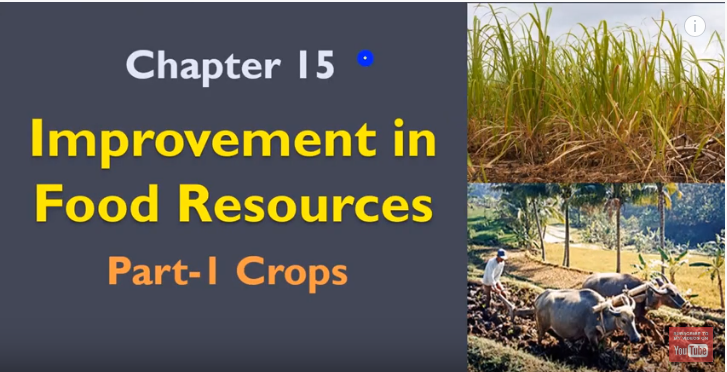
Part 1- Crops
- See Video Explanation of Chapter 15 Improvement in Food Resources – PART 1
- See Video Explanation of Chapter 15 Improvement in Food Resources – PART 2
- Introduction
- Irrigation
- Sustainable agriculture
- Crop Protection
- Types of crops
- Storage
- Crop Production Management
- Improvement of Soil Fertility
- Nutrient Management
- Crop Variety improvement
- Manures and Fertilizers
Introduction
We all know that we need food for growth, development and repair of the body. It also protects us from diseases and provides us energy for carrying various activities. We also know that only green plants are autotrophs and rest are heterotrophs. Man is a heterotroph, that is why he is involved in the activities of farming and rearing animals to meet his food requirements.
Top
Video Explanation of Chapter 15 Improvement in Food Resources Part 1
Sustainable agriculture
As you all know that resources are limited and we need to conserve them and also need to maintain ecological balance and also, we have to cope up with demand of humans. So, we need to adopt certain techniques in order to maximize agriculture yield.
It is the adoption of various farming and production management techniques to maximize the yield. Implementing them would help in the following ways-
- Conserving natural resources.
- Maintaining environmental balance.
- Coping with the changing human needs.
Due to these reasons, it is necessary to adopt practices like the following-
- Mixed cropping
- Crop rotation
- Intercropping
- Integrated farming
Integrated agriculture – It implies to a combination of agriculture with other forms of culture such as pisciculture, aquaculture, apiculture, sericulture, poultry farming, livestock production (animal husbandry), etc.
Advantages of sustainable agriculture are as follows-
- Achieves integration of natural biological cycles and controls.
- Protects and renews soil fertility.
- Optimizes the management and use of farm resources.
- Reduces the use of non renewable resources.
- Provides income.
Organic farming – It is the practice of raising crops which have been polluted by the use of manures, bio-fertilizers and bio-pesticides.
This farming insures the following-
- No pests, no weeds.
- Proper supply of nutrients.
- No toxicity means no pollution.
- Organic waste can be recycled.
- It maintains soil health.
Video Explanation of Chapter 15 Improvement in Food Resources Part 2
Types of crops
There are many vegetables, fruits, etc. which we get in a particular season like watermelon, mangoes, etc. These are not available throughout the year. They are seasonal. Likewise, there are many vegetables that are seasonal. This is because they require particular conditions for their growth.
There are different types of crops that are sown and they are classified depending upon the seasons when they are grown.
The types of crops are:
- Kharif crops
- Rabi crops
- Zaid crops
Kharif crops – These crops are sown in the beginning of monsoon that is between June and July. They are harvested in September or October. They require a lot of water.
For example: rice, maize, groundnut, etc.
Rabi crops – These crops are sown in winter season that is between November and December. They require cold conditions therefore, called as winter crops.
For example: wheat, barley, gram, mustard, etc.
Zaid crops – They are harvested by March or April. These crops are grown in the summer season.
For example: water melon, cucumber, etc.
Crop Production Management
It refers to controlling the various aspects of crop production to obtain the best and maximum yield.
Crop management includes the following-
- Nutrient management
- Irrigation
- Cropping patterns
Nutrient management
As we have already studied that different crops require different nutrients for their growth. So, let us study about the nutrients that are essential and required by plants.
It involves selection, timing and the right amount of nutrient supply to crops. Like us, they also need inorganic elements for building their structure and maintaining their metabolic processes. These inorganic substances are called nutrients.
Nutrients are supplied to plants by the following-
- Air, water and soil.
- Plants require a lot of nutrients but some in large and others in small amounts.
Macronutrients and Micronutrients
Plants need nutrients in different amounts. For example, some plants need nitrogen and some do not need nitrogen or some need it in comparitively lesser quantity. This shows that the nutrient requirement is different for different crops. So, accordingly, nutrients are classified as given below.
- Macronutrients
- Macronutrients
Macronutrients: they are required in large amount and are essential for the plant. They mainly take part in building the plant body and protoplasmic structures.
Out of 13 essential nutrients, 6 are macronutrients. They are as follows- Nitrogen, Phosphorous, Potassium, Calcium, Magnesium and Sulphur.
Micronutrients: They are those nutrients that are required in small amounts. They are involved in enzyme activity and electron transportation.
Out of 13 essential nutrients, 7 are micronutrient that is Iron, Manganese, Boron, Zinc, Copper, Molybdenum and Chlorine.
Manures And Fertilizers
Soil is the source of many nutrients and humus. These nutrients are taken up by plants from the soil. You must have seen that every kind of soil is not able to produce crops. The reason behind it is that the soil lacks the nutrient part or it may not be suitable for holding plants or may not have aeration tendency. The factor responsible can be anything. The necessary condition for soil to produce crops is that it should be fertile. For that you must have seen that cow dung cakes, etc. are added to the soil. Let us study how soil can be made fertile.
Manures: They are added to maintain the fertility of soil. These are organic substances obtained by the decomposition of animal and plant waste.

Types of manures
Depending upon the kind of waste used for making manure, manures are of different kinds as mentioned below:

- Farmyard manure
- Compost
- Green manure
Farm yard: It consists of cattle dung and urine, etc.
Compost: It is formed by decomposition of plants and animal wastes, etc. It is a biological process in which both aerobic and anaerobic respiration takes place in microorganisms and they decompose organic matter.

When compost is formed by use of earthworms, the composting is called vermicomposting.
Green manure: It consists of decomposed leguminous plants like sun hemp, etc. A green manure supplies nitrogen, phosphorous, organic matter and also prevents soil erosion.
Advantages of manure
- Add nutrients to soil
- Add humus to soil
- Improve the quality of soil
Fertilizers
To increase the fertility of the soil, chemicals are also used. They are of great importance but farmers face problems in disposing of these chemicals as they are not eco-friendly. But still, they are of great importance. Let us study about them.

They are inorganic compounds which supply specific nutrients. For example: NPK, Ammonium Sulphate, Ammonium Phosphate, etc.
They are classified into four groups:
- Nitrogenous: like urea, ammonium sulphate, etc.
- Phosphatic: like single superphosphate, triple super phosphate, etc.
- Potassic like potassium sulphate.
- Complex fertilizers: which supply more than one nutrient like NPK, urea, ammonium phosphate, etc.
There are lots of differences between manure and fertilizers. Let us list them up.
| Manure |
Fertilizer |
| Organic Substance | Inorganic Substance |
| Contain all essential nutrients | Supply specific nutrients |
| Slow in action | Fast in action |
| Add humus to soil | Do not add humus to soil |
| They are required in large number | Required in less number |
| Take long time to show result | Show fast results |
| Difficult to store and transport | Easy to store and transport |
Biofertilizer – It is a type of fertilizer in which organisms enrich the soil with nutrients. It is renewable and pollutant free.
For example: Blue green algae and Rhizobium etc.
Class 9 Science Chapter wise Explanation
| Chapter 1 Matter in Our Surroundings | Chapter 2 Is Matter around us Pure | Chapter 3 Atoms and Molecules |
| Chapter 4 The Structure of an Atom | Chapter 5 The Fundamental unit of life | Chapter 6 Tissues |
Irrigation
We all know that plants need water for growth, for photosynthesis and for transportation of nutrients, food and water. Water is taken by plants from the soil. There are different types of water like surface water, capillary water, run – way water, etc. that soil possesses. But out of all, only capillary water is actually available to plants.
Irrigation: It is supplying water to plants.
Modern techniques of irrigation:
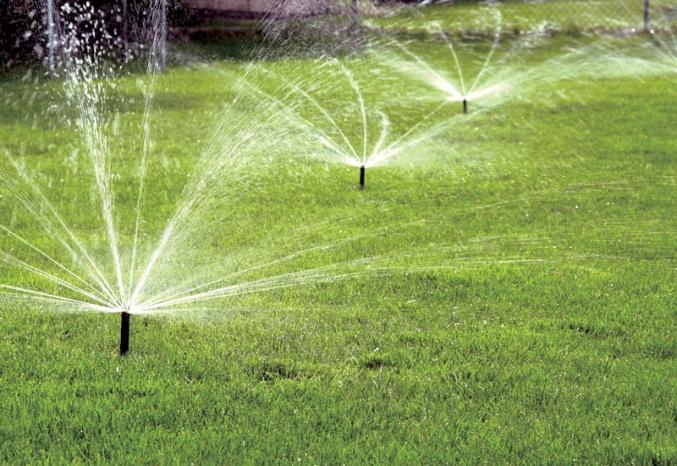
1. Sprinkler system and drip irrigation for better supply of water.
Sprinkler system
The perpendicular pipes having rotating nozzles on top. They are joined to the main pipeline at regular intervals. When water is allowed to flow through the main pipe under pressure with the help of a pump, it escapes from the rotating nozzles and gets sprinkled on crops like rain.
Drip irrigation
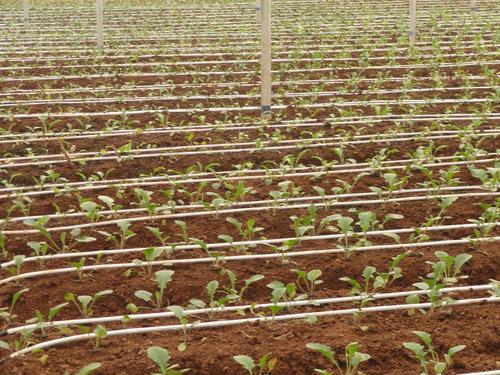
In this, water falls drop by drop just at the position of the roots through the pipes that run along the field.
It is the best technique as it helps in the following-
- Provides water directly to roots drop by drop.
- saves water.
Role of water in plants is as follows-
- Helps in translocation of food.
- Protects crops from frost and hot climate.
- Seeds can not respire.
- Roots do not grow well.
Crop protection
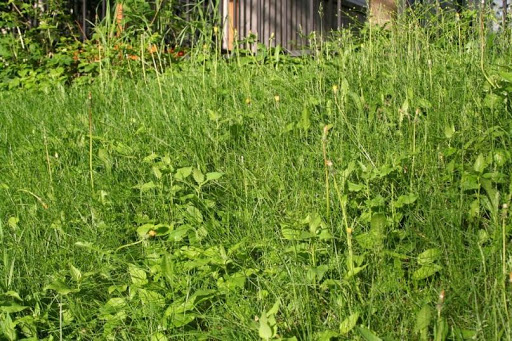
There are a lot of factors that can damage crops or reduce the yield like pests, weeds, rodents, etc.They have to be controlled so as to ensure a healthy crop yield.
Weeds: These are unwanted plants that grow along with the main crop.
Disadvantage of Weeds are as follows-
- They compete with the main crop for nutrients, space, sunlight, water, etc.
- They lower the quality of the main crop.
- They lead to several diseases.
Process of removing weeds is as follows-
- Manual weeding: Removing weeds by hands.
- Chemical method: Use of weedicides: By using chemicals like 2-4D etc.
- Biological method: In this method, some insect or organism is put in the field that eats weeds and not the main crop.
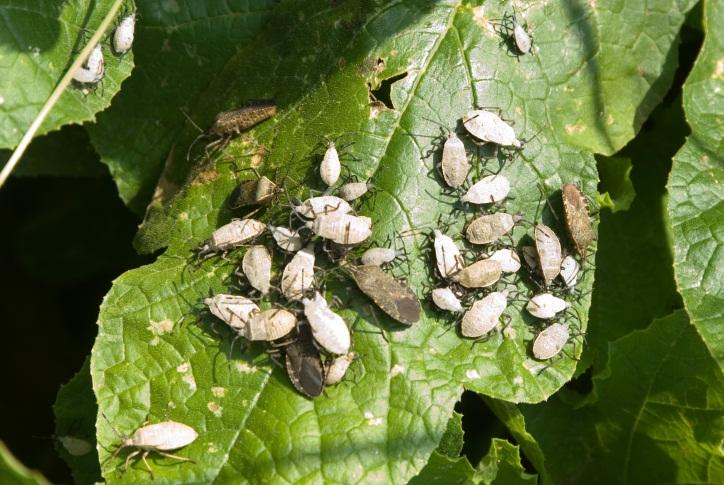
Pests: They are the organisms that damage crops by destroying them or by spreading diseases in the crops. For example: insects, bacteria, etc.
They affect the crops in different ways which are mentioned below-
- They lower the quality of the crops.
- They reduce yield.
- They bore inside the crops.
We can control them by different methods which are as follows-
They can be killed by pesticides which include the following-
- insecticides.
- weedicides.
- fungicides.
For example; DDT, BHC, Malathion, metasystox, lindane, etc.
Insects affect crops in different ways as follows-
- There are chewing insects: that cut root, stem, leaf, etc. like caterpillars, etc.
- There are sucking insects: that suck the cell sap of plants like leaf hoppers, etc.
- There are internal feeders that bore into plant parts like: weevils, etc.
- Root cutting insects are destroyed by: chloropyriphos.
- Stem and leaf cutting insects are destroyed by: Malathion, Lindane and Thiodan.
- All sap sucking insects are destroyed by: Dimethoate and Metasystox.
Diseases in crop plants
The commonly occurring diseases are:
- Seed borne diseases. For example: leaf spot of rice.
- Soil borne diseases. For example: smut of bajra.
- Air borne diseases. For example: blast of rice.
- Water borne diseases. For example: bacterial blight in rice.
Storage
We all know that farmers put their money, effort and hopes in producing crops. Storage is very important as it is a crucial step. So, a lot of precautions have to be taken.
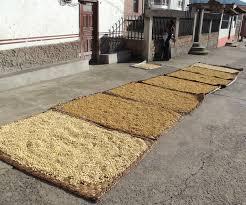
Methods Employed
-
- Drying- By drying, moisture gets removed and it prevents the growth of microorganisms.
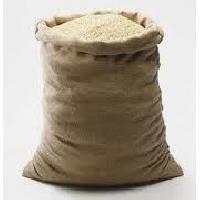
-
- Maintaining storage containers: Gunny bags, earthen pots, etc. used should be new, without cracks etc.
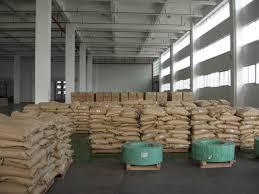
- Chemical treatment- Godowns, etc. should be sprayed with fumigants, there should be no seepage, etc. so that crops can be stored properly.
- Use of improved storage structures- Structures that are airtight, rat proof, can maintain steady temperature, etc. are used like silos.
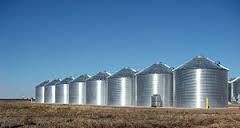
Proper storage: it prevents food from spoiling, helps in availability of fruits & vegetables throughout the year and also helps in maintaining an emergency stock.
Improvement of Soil fertility
The fertility of soil can be mentioned by natural methods which are as follows-
- Crop rotation
- Multiple cropping
Let us discuss them in detail-
Crop rotation – It is the method of growing crops alternately on the same land.
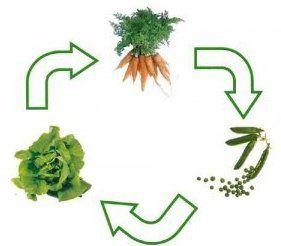
For example, let’s say that if we have grown rosette family plant for one season then in the next season, we will have to grow plants of the leguminous family. By doing this, the fertility of soil can be maintained. The rosette family plants take nitrogen nutrient from the soil for their growth. So, in this way the nitrogen gets deficient in soil. In order to replenish the soil, nitrogen fixing plants (leguminous) plants are grown.
Like the Legumes which include peas, beans, grams and pulses are grown in first season and wheat in the next season. The legume crops (have nitrogen fixing bacteria), they use up different nutrients from the soil but fix the atmospheric nitrogen and make the soil richer in nitrogen and so, the fertility of soil is maintained.
Advantages of crop rotation are as follows-
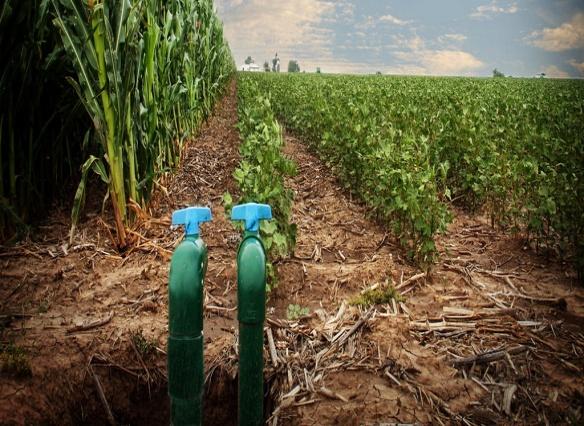
- The land gets utilized in a better way
- Soil Fertility is maintained
- Farmer has a variety of crops for selling
Mixed cropping- It is a method of growing two or more types of crops in the same field.
Criteria of selecting crops- Crops with different maturation period are chosen.
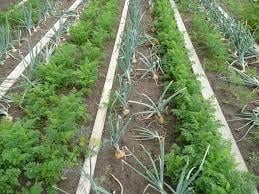
Although this practice helps in replenishing the soil nutrients, but it leads to some difficulties also like in harvesting, difficulty in supplying fertilizers, it can spread pests, it can lower the quality of crops. So, to overcome these disadvantages, mixed cropping is converted to intercropping.
Intercropping: it is the growing different crops in definite pattern. All limitations of multiple cropping is overcomed by intercropping.
| Chapter 7 Diversity in Living Organisms | Chapter 8 Motion | Chapter 9 Force and Laws of Motion |
| Chapter 10 Gravitation | Chapter 11 Work and Energy | Chapter 12 Sound |
Crop variety improvement
We need two important desirable qualities in food plants that is- high yield and natural resistance to diseases. These traits can be acquired with the help of natural mutation but the rate of mutation is very slow. Therefore, they have to take the help of artificial procedures like hybridization.
Hybridization – It is the technique of crossing plants of different varieties with desired characters in order to produce new variety that possesses the desired characters.
Procedure – It includes the introduction, selection and crossing of varieities.
Introduction- It is the process of introduction of crop plants from the place where they are grown to the place where they are not grown. This is plant introduction.
Selection- In this, the plants with desired characters are chosen.
Crossing- In this step, the desired varieties are crossed and as a result, they produce an offspring that possesses the desired characters.
Animal husbandry
- See Video Explanation of Chapter 15 Improvement in Food Resources – PART 2
- Introduction
- Pisciculture
- Cattle Farming
- Apiculture
- Poultry Farming
- NCERT Book solutions
Video Explanation of Chapter 15 Improvement in Food Resources Part 2
Introduction
We know that like crops, animals are also important for us as they play different roles. So, raising them and caring for them is very important. They give us many products and also act as a means of transportation, for ploughing fields and lots more. Let us learn about them.
Animals are equally important to us. So, proper planning is needed for domestic animals shelter- breeding, health, disease control, etc. There is a branch of science that deals with it, called animal husbandry.
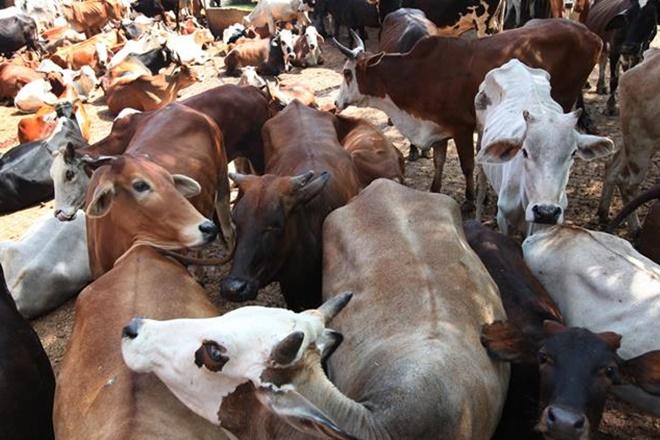
Animal husbandry is that branch of agriculture that deals with feeding, caring and breeding of domestic animals. The domestic animals are also called livestock (used for farm purposes) and include cattle, buffalo, yak, horse, goat, sheep, etc. It includes the following-
- Cattle farming
- Poultry
- Fish production
- Bee keeping
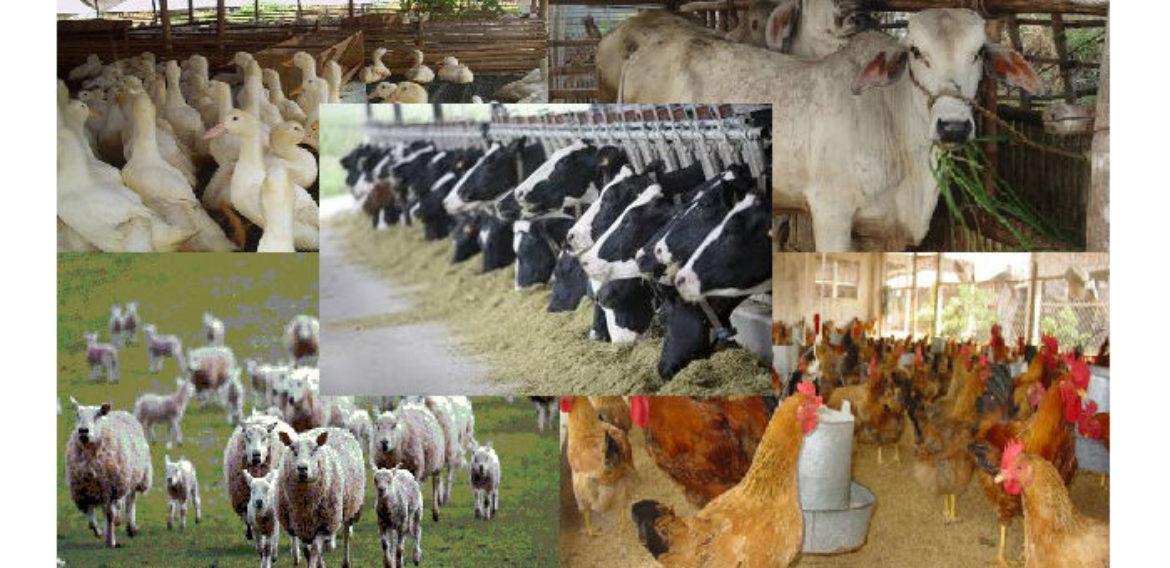
Cattle farming
It is done to fulfill the specific needs of dairy, drought or dual purpose. Like, they provide us with milk, meat, leather, etc. They play an important role in a farmer’s life.
The scientific name for:
Cow- Bos indicus and for Buffalo– Bubalus bubalis
Breeds of cow are of 2 types –
- Milch
- draught
Let us discuss them in detail-
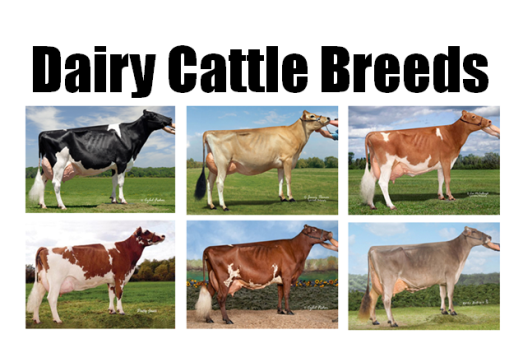
Milch breeds- They are those breeds that give us milk as they have a large digestive system and a spacious udder because all of their food is converted into milk. They include the following breeds-
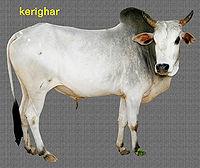
- Gir– found in Gujarat and Rajasthan.
- Sahiwal- found in Punjab, Haryana, Uttar Pradesh.
- Red Sindhi – found in Andhra Pradesh.

Draught breeds- They are those breeds that are working animals and they give a little milk. They are used as beasts of burden in various agricultural practices. They include the following breeds-
- Nageri – found in Punjab, Haryana and U.P.
- Hallikar – found in Karnataka.
- Malvi- found in Rajasthan and M.P.
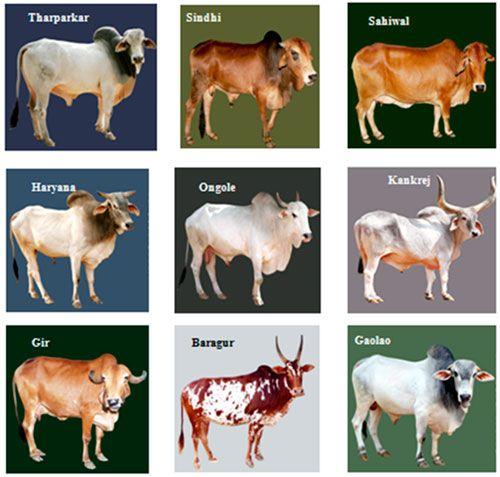
Dual purpose breeds- They are those breeds that serve both functions- that is, provide dairy products as well as work for us. In India, dual purpose breeds are preffered because cows provide good milk yield and bullocks act as good workers. They include the following breeds-
- Tharparkar- found in Gujarat and Andhra Pradesh
- Kankrej- found in Gujarat
Breeds of buffalo
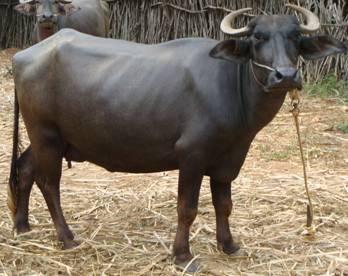
- Murrah- It is found in Haryana and Punjab. It has short and curved horns. The Weight of female is 430-500 kg and of male is 530-575 kg. Their Average milk production is about 1800-2500 litres.
- Mehsana- It is found in Gujarat. It is usually black or grey in colour. The milk production is 1200-2500 litres.
- Surti- it is found in Gujarat. They are black or brown. Their horns are sickle- shaped. It gives about 1600-1800 litres of milk.
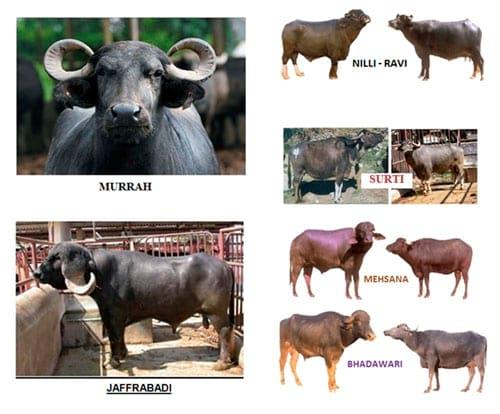
Breeding methods
Realizing the importance of livestock for all, the different techniques are adopted as an effort to improve the yield by developing new varieties.
There are two main breeding methods as follows-
- Natural method
- Artificial method
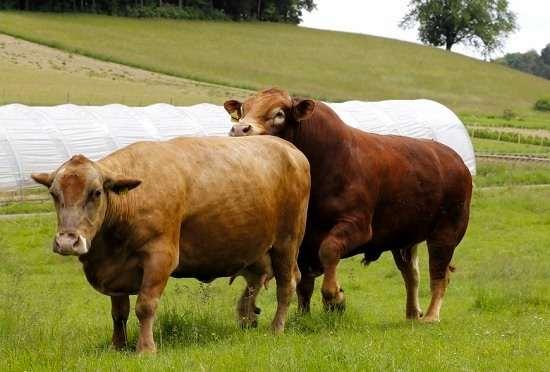
Natural method- It is the cross breeding of the desi breed and the bull of high yielding exotic breed by natural mating process during its heat period.
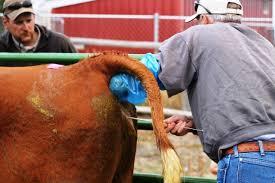
Artificial method or Artificial insemination
This is the artificial method adopted to get desired characters in a breed. But various precautions have to be taken. Let us learn about them.
In it, the semen obtained from the desired male is injected into the female reproductive tract during its heat period.
Technique used- The semen of a healthy male is collected and preserved by freezing it. Then it is injected into the genital tract of the female during its heat period. It is a reliable method of breeding.
Advantages of artificial insemination
- The breeds formed are more adaptable.
- They give more milk.
- The desired characters are introduced.
- Most reliable and hygienic method.
- It gives a high rate of successful fertilization.
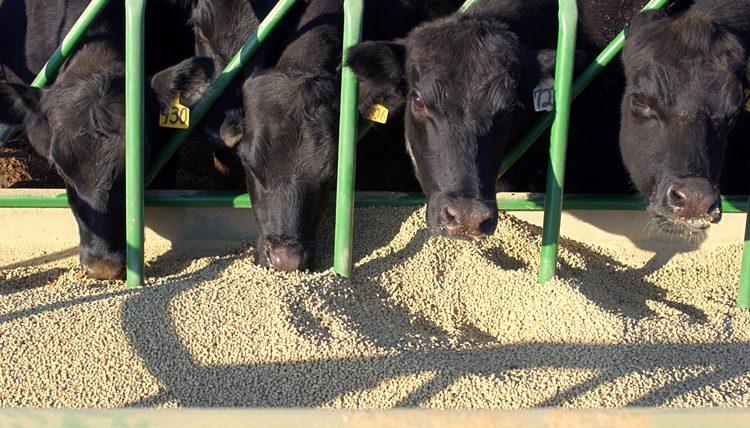
Cattle feed – The feed provided to cattle is important because it influences their growth and development. Their diet consists of roughage and concentrates which is as follows-
- Roughage – It has fibers such as green fodder, silage, hay, legumes, etc.
- Concentrates –they are a mixture of substances rich in one or more nutrients. They are low in fibers and contain more nutrients. For example- cotton seeds, bajra, gram, etc.
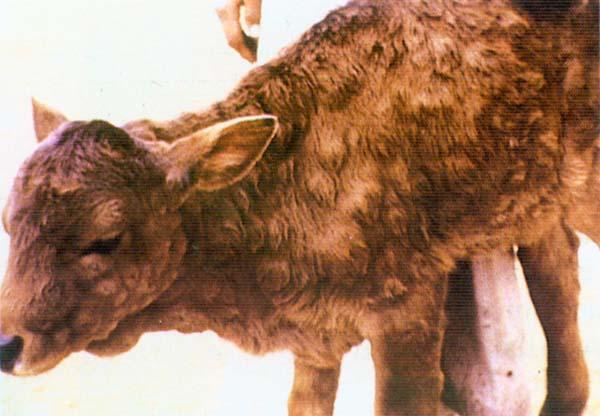
Cattle disease – Cattle may suffer from any of the following diseases-
- Cow pox – fever and small nodules.
- Rinderpest – constipation, Diarrhea, loss of appetite, etc.
- Anthrax –fever with swelling of body, milk secretion is reduced.
- Ringworm – small, circular raised patches.
Poultry farming
Poultry care is equally important because the poultry products like eggs and meat help in providing a balanced diet to population. Let us study how we can care about them.
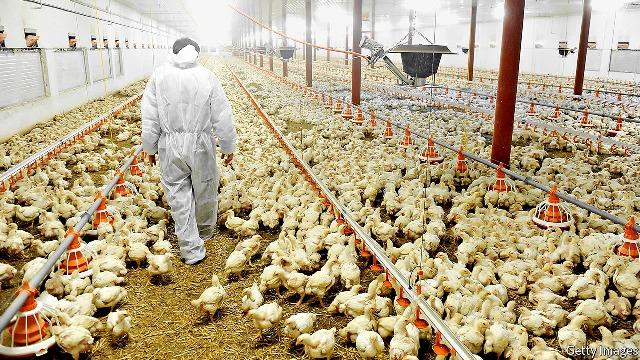
It means taking care of poultry birds for the increased production of eggs and meat. For this, proper management is required that includes hatching, rearing, prevention from diseases and sanitation and proper marketing management.
Poultry breeds
Desi breeds: They are Aseel, Chittagong, Ghagus and Busra.
Exotic breeds: the two exotic breeds that are very important are White leghorn (small body size-2.7kg cock and 2kg hen) and Rhode Island red (good egg layer and also meat yield is enough). Other exotic breeds are Black minorcha, Plymouth.
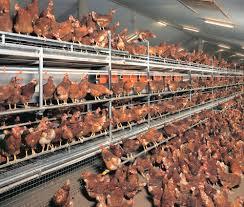
Cross breeds: They are obtained by crossing desi and exotic breeds so as to improve the characters that is HH-260, IBI-80 and B-77.
Stages in poultry- They are layers and broilers.
Layers: It is an egg laying poultry. They require enough space and light. They are fed with calculated feed.
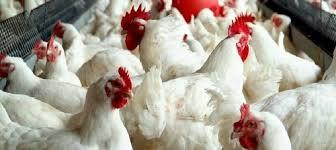
Broilers: It is poultry reared for obtaining meat. Their food requirement is rich in proteins and Vitamin A and D. They grow fast.
Poultry care
We have to take good care of poultry birds to get good poultry product. The care or need of poultry birds depends upon their stages as accordingly the requirements differ.
There are two distinct life phases:
- Growing period
- Laying period
Growing period: during this period the chicks grow and called as growers. For this, they need enough space and feed provided is also restricted and calculated.
Laying period: it is the period from sexual maturity till the end of laying period. They are called layers. They need enough space and proper lighting. A feed rich in nutrients influences the hatching process.
Poultry disease
Poultry birds suffer from various diseases that are caused by viruses, bacteria and other microorganisms. Some common diseases are listed below-
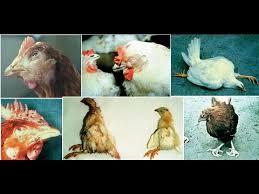
1.Dermitis: irritation, blisters on skin surface.
2.Fowl pox – lesions in mouth, discharge from eyes and nose, etc.
3.Fowl cholera – loose motions and dehydration.
Top
| Chapter 13 Why do we fall ill | Chapter 14 Natural Resources |
| Chapter 15 Improvement in Food Resources |
Pisciculture
Fish is an important aquatic food which is rich in proteins. It is highly nutritious and easily digestible. Fish products like fish liver oil is rich in vitamin A and vitamin D. Let us study more about fish production.
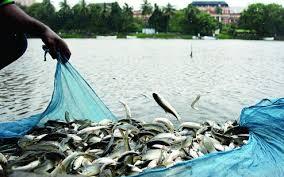
It is the proper rearing and caring of fishes. Fisheries are set up and they deal with the capturing, preservation, exploitation and utilization of fishes.
Depending upon the mode of obtaining fishes, we have two types of fisheries as follows-
- Capture fisheries
- Culture fisheries
Capture fisheries: The fish is caught from natural waters and modern technology is used in the whole process.
Culture fishery: It is the cultivating, rearing and harvesting of fish. It is also called as Pisciculture.
Composite fish culture – Fish production by culturing single species in a pond using old traditional methods gives low yield but if several species are cultured together in a pond, the production increases and so do the monetary gains.
For culturing different species, we need to select them according to the feeding habits so that they should be compatible with each other and there should be no competition between them. Like, we can culture silver carp with rohu, mrigal as silver carp is surface feeder, rohu is column feeder, mrigal is a bottom feeder. So, their requirements are different and they also feed on different levels.
Top
Apiculture
It is rearing, care and management of bees for obtaining honey, wax and other substances.
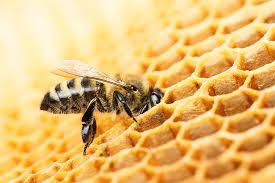
Honey bee varieties
Indian varieties: Apis dorsata
Apis florae
Exotic varieties: Apis melifera
Apis adamsoni
The most commonly domesticated bee is Apis mellifera due to the following reasons-
- Its gentle nature
- Good production of honey
- Ability to protect from diseases
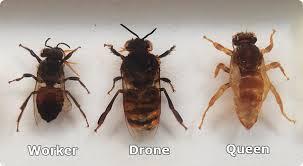
Casts of Bees are as follows-
- Queen
- Drone
- Worker
Queen: She is the mother of the colony as its egg laying capacity is maximum (2000 eggs per day). It lays both fertilized and unfertilized eggs. They are larger in size. They feed on protenious food.
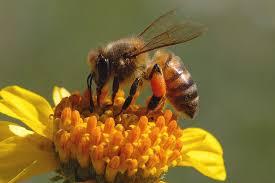
Drone: It is a haploid fertile male. They are larger in size and are quite noisy. They are stingless and their role is to mate with the queen.
Worker: It is diploid, sterile female. It is the smallest of all. They fulfill almost all the responsibilities of the colony. They live only for 3-12 months.
Pasturage: The quality and taste of honey depends upon the flora available for nectar and pollen collection.
Top
Improvement in food resources Question and Answers
Q1. Explain any one method of crop production which ensures high yield.
Ans. Manuring and use of fertilizers can ensure high yields.
Q2. Why are manures and fertilizers used in fields?
Ans. Manure and fertilizers are added to the side soil of crop field to increase the fertility of soil and productivity of crop. They overcome the deficiency of nutrients in the soil of the field.
Q3. What are the advantages of inter-cropping and crop-rotation?
Ans. The advantages of crop rotation and intercropping are as follows-
- The land gets utilized in a better way
- Soil Fertility is maintained
- Farmers have a variety of crops for selling
- It improves crop variety and yield
- It saves nitrogenous fertilizers.
Q4. What is genetic manipulation? How is it useful in agriculture practices?
Ans. Genetic Manipulation is the introduction of desired characters such as high yield, short maturity time, biotic and abiotic resistance, etc. in the genetic set up of an organism. Hybridization is one of the techniques used for it. It involves crossing two dissimilar plants in order to get the desired characters in an organism.
Q5. How do storage grain losses occur?
Ans. Biotic and abiotic factors cause losses during storage. These factors can lower the quality of crops by causing poor power of germination, reducing weight of grain, discoloration, etc. These types of destroyed grains are unable to fetch money in the market.
Q6. How do good animal husbandry practices benefit farmers?
Ans. Animal Husbandry is the scientific management of farm animals. These farming practices are undertaken by farmers along with agriculture as mixed farming.
Q7.What are the benefits of cattle farming?
Ans. The benefits of cattle farming are as follows-
- It provides milk and milk products.
- Bullock labour is used for agricultural practices.
Q8. For increasing production. What is common in poultry, fisheries and bee-keeping?
Ans. Variety improvement, housing, rearing, sanitation, disease control and marketing.
Q9. How do you differentiate between capture fishing, mariculture and aquaculture ?
Ans. In the following table a comparison has been made between capture fishing, mariculture and aquaculture.
| Capture fishing | Mariculture | Aquaculture |
| In capture fishing, the fish catching is done from various natural resources, lakes, rivers, seas,etc. | In Mariculture, culture of marine fishes is done in the coastal water. The desired marine fishes and other animals are cultivated and obtained. | In aquaculture, culturing of fish is done using any water body which may contain salt water or fresh water. Mariculture is a type of aquaculture. |
Q10. What do we get from cereals, pulses, fruits and vegetables?
Ans :
- Cereals provides carbohydrates for energy requirements.
- Pulses provide us proteins.
- Fruits and vegetables provide us with vitamins, minerals and a small amount of proteins as well.
Q11.How do biotic and abiotic factors affect crop production?
Ans : Crop production goes down due to biotic factors like diseases, insects and nematodes .It is known that different crops require different climatic conditions , temperature and sunlight for their growth and completion of their lifecycle .
Q12. What are the desired agronomic characters for crop improvement?
Ans : The desired agronomic characters for crop improvement are as follows-
- Tallness and profuse branching for fodder crops.
- Dwarfness in case of cereals as less nutrients are consumed.
- Higher yield
- Improved quality
- Disease resistance
- Biotic and abiotic resistance
Q13. What are macro-nutrients and why are they called so?
Ans : Macronutrients are those nutrients that are required in more quantity and they are called so because they are very important and required in a large amount.
Q14.How do plants get nutrients?
Ans : Plants obtain nutrients from soil, air and water. Carbon and oxygen are obtained from air and hydrogen from water and other minerals from soil.
Q15. Compare the use of manure and fertilizers in maintaining soil fertility.
Ans :
| Manure |
Fertilizer |
| Organic Substance | Inorganic Substance |
| Contain all essential nutrients | Supply specific nutrients |
| Slow in action | Fast in action |
| Add humus to soil | Do not add humus to soil |
| They are required in large number | Required in less number |
| Take long time to show result | Show fast results |
| Difficult to store and transport | Easy to store and transport |
Q16. Which of the following condition will give more benefits :
a) Farmers use quality seed but not adopt irrigation and use fertilizer
b) Farmers use ordinary seeds and adopt irrigation, use fertilizer
c) Farmers use quality seeds and adopt irrigation and use fertilizer and use crop protection measures.
Ans : (c) Farmers use quality seeds and adopt irrigation and use fertilizer and use crop protection measures.
Q17. Why should preventive measures and biological control methods be preferred for protecting crops?
Ans : These methods do not cause pollution like fertilizers and can lead to biological magnification and eutrophication.
Q18. What factors may be responsible for losses of grains during storage?
Ans : Biotic and Abiotic factors may be responsible for losses of grains during storage.
Q19. Which method is commonly used for improving cattle breeds and why?
Ans : Artificial insemination is preferred for improving cattle breeds because with this method, we can fertilize 3000 cows from the semen collected from one bull.
Q20. Discuss the implications of the following statement : “It is interesting to note that poultry is India’s most efficient converter of low fibre food stuff into nutritious animal protein food.”
Ans : Poultry farming is undertaken basically to raise domestic fowl for egg production and chicken meat. The food consumed by poultry birds is fibrous, cheap and formulated using agricultural byproduct .Hence, the product that is not used by the human population is converted into chicken, meat and eggs.
Q21: What management practices are common in dairy and poultry farming?
Ans : Feeding, Breeding and disease control are common in dairy and poultry farming.
Q22. What are the difference between broilers, layers and their management ?
Ans :
Layers: It is an egg laying poultry. They require enough space and light .They are fed with calculated feed.
Broilers: poultry reared for obtaining meat. Their food requirement is rich in proteins and Vitamin A and D. They grow fast.
Q23. How are fish obtained?
Ans : Fish are obtained by catching from natural resources or by cultivating using cultural system.
Q24. What are the advantages of composite fish culture?
Ans. Fish production by culturing single species in a pond using old traditional methods gives low yield but if several species are cultured together in a pond, the production increases and so do the monetary gains. For culturing different species, we need to select them according to the feeding habits so that they are compatible with each other and there should be no competition between them. Like, we can culture silver carp with rohu, mrigal as silver carp is surface feeder, rohu is column feeder, mrigal is a bottom feeder. So, their requirements are different and they also feed on different levels.
Q25. What are the desirable characters of bee varieties suitable for honey production?
Ans. The desirable characters of bee varieties suitable for honey production are-
- Its gentle nature
- Good production of honey
- Ability to protect from diseases
Q26. What is Pasturage and how it is related to honey production?
Ans : Pasturage is concerned with nectar and pollen collection by honey bees. The quality of honey depends upon flora or pasturage available for nectar collection.
Top
Extra questions
Q1. Fill in the blanks
(a)……………. are rich in vitamis.
(b) The crops which are grown in the rainy season are called…………crops.
(c) ………………Crop grows in winter season.
(d) Pigeon peas are a good source of ……………..
(e) Berseem is an important………..crop.
Ans. (a) Vegetables
(b) Kharif
(c) Rabi
(d) Protein
(e) Fodder.
Q2. Match the items of column A with those of column B.
| Column A |
Column B |
| (a) Fish farming (b)Catla (c) Rohu (d)Mrigal |
1. Bottom feeder 2. Culture fishery 3. Surface feeder 4. zone feeder |
Ans. (a)-2
(b)-3
(c)-4
(d)-1
Q3. What is GM Crop? Name any one crop which is grown in India?
Ans. GM or genetically modified crop is the one which has been developed through the introduction of some specific genes from other sources for example- insect resistant Bt cotton (being grown in India), vitamin A rich Golden rice.
Q4. List out some useful traits in improved crop.
Ans. (1) Higher yield
(2) Improved quality
(3) Resistance to biotic and abiotic stresses
(4) Change in maturity
(5) Wider adaptability
(6) Desirable agronomic trait.
Q5. Why is organic matter important for crop production?
Ans. Organic matter forms humus. It is essential for crop production because it makes the soil fertile. Organic matter has the following advantages-
1. It improves soil structure by forming soil crumbs.
2. It increases water holding capacity of sandy soils.
3. It improves aeration of clayey soils.
4. During its decomposition, it liberates minerals (inorganic molecules)
which enrich the soil.
5. Biochemical’s present in decaying organic matter improve growth of crop
plants.
Q6. Why is the use of excess fertilizers detrimental for the environment?
Ans. Use of excess fertilizers tends to cause the following-
1. Mineral loading of underground water.
2. Excess minerals in the crop plants.
3. Salinization of soil.
4. Runoff from fertilizer rich soil, will causes eutrophication of water bodies.
Q7. Give one word for the following
1. Farming without the use of chemicals are fertilizers, herbicides and pesticides is known as ………..
2. Growing of wheat and groundnut on the same field in called…………….
3. Planting of soya bean and maize in alternate rows in the same field is called………………..
4. Growing different crops on a place on a piece of land in pre planned succession is known is…………………….
5. Xanthium and Parthenium are commonly known as………….
6. Causal organism of any disease is called as …………….
Ans: 1. Organic Farming
2. Mixed cropping
3. Inter-cropping
4. Crop rotation
5. Weeds
6. Pathogen
Q8. Match column A and B
| Column A |
Column B |
| A. Milch B. Sahiwal Red Sindhi C. Cattle used for tilling and carting D. Indian breed of chicken E. Chicken better fed for obtaining meat |
1. Milk producing female 2. Broiler 3. Draught animals 4. Local breed of cattle 5. Aseel |
Ans.
- A – 1
- B – 4
- C – 3
- D – 5
- E – 2
Q9. If there is low rainfall in a village throughout the year, what measures will you suggest to the farmers for better cropping?
Ans. 1. Reduce tilling
2. Enrich soil with humus which increases its water holding capacity
3. Use of drought resistant and early maturing varieties of crop.
Q10. Group the following and tabulate them are energy yielding, protein yielding, oil yielding and fodder crop- Wheat ,Rice ,Berseem, Maize, Gram, Oat, Pigeon gram, Sudan grass, Lentil, Soyabean, Groundnut, Castor and Mustard.
Ans. 1. Energy yielding crop – Wheat, Rice, Maize, Oat.
2. Protein yielding Crop – Gram, Pigeon gram, Lentil, Sudan grass.
3. Oil yielding crop – Groundnut, Castor, Mustard, Soyabean.
4 . Fodder crop – Berseem, Oat, Sudan grass.
Q11. Define the terms hybridization and photoperiod.
Ans. Hybridization – It is crossing of two (or more) types of individuals with different useful traits in order to bring them together in the progeny.
Photoperiod – It is duration of day light that influences plants and other organisms
in their growth, reproduction and maturation.
Q12. Fill in the blanks.
1. Photoperiod affect the………………..
2. Kharif crops are cultivated from………..to……………..
3. Rabi crops are cultivated from…………………….to……………
4. Paddy, Maize, Green Gram and Black gram are……………crops.
5. Wheat, Gram, Pea and Mustard are ………………crops.
Ans. 1. Flowering (of plants)
2. June, October
3. November, April
4. Kharif
5. Rabi
Q13.Cultivation practices and crop yield are related to environment conditions. Explain.
Ans. All crops do not grow under similar conditions. Some require high temperature , some low temperature, longer duration of sunlight, shorter duration of sunlight, more humidity, low humidity, moderate humidity, loam soil, sandy soil, etc. Apple cannot be grown in the plains because it require several days of low temperature. In the plains, there are two major seasons of crop plants- Kharif (rainy season) and rabi (witner season).
Q14. Fill in the blanks
1. A total of …………………nutrients are essential to plants.
2. ………….and …………..are supplied by air to plants.
3 ………is supplied by water to plants.
4. Soil supplies …………..nutrients to plants.
5. …………… nutrients are required in large quantity and called is …………….
6. ………nutrients are needed in small quantity for plants are called…………
Ans. 1.16
2.Carbon, oxygen
3. Hydrogen
4. 13
5. Six, macronutrients
6. Seven, micronutrients.
Q15.Differentiate between compost and vermicompost.
Ans.
| Compost |
Vermicompost |
| 1. It is prepared from all types of organic remains-garbage, sewage, sludge, animal refuse, farm waste, straw, uprooted weeds, etc. 2 Organic remains are decomposed by released enzymes of the microorganisms. |
3. It takes 3 to 6 months to prepare.
1. It is prepared from domestic waste, vegetable waste, uprooted weeds and farm refuse.
2. Organic remains are fed by earthworms and in pulverized state.
3. It takes 1 to 12 months to prepare.
Q16. Arrange these statements in the correct sequence of preparation of green manure.
(a) Green plants are decomposed in soil.
(b) Green plants are cultivated for preparing manure or crop plants are used.
(c) Plants are ploughed and mixed in soil.
(d) After decomposition, it becomes green manure.
Ans. (b) → (c) → (a) → (d)
Q17. In agriculture practices, higher input gives higher yield. Discuss how.
Ans. In agriculture, higher yield can be obtained only by applying yielding varieties, improved farming practices, modern technology, latest agricultural machines and implements, nutrient supply, etc. All these require high cost and knowledge of new techniques and improvements. Therefore, a farmer’s purchasing capacity for inputs determines the cropping system and production exercises.
Q18. Differentiate between the following
Beekeeping and poultry farming.
Ans. Differences between Beekeeping and Poultry farming.
|
Beekeeping |
Poultry farming |
| 1. it is the practice of rearing, care and management of honey bees. 2. It provides honey, bee wax and related products. 3. Bees obtain their food from flowers. |
1.It is the practice of raising domestic fowl.
2. It provides egg and meat. 3. Poultry birds are provided feed by their rearers. |
Q19. Give merits and demerits of fish culture.
Ans. Merits-
1. Economically important desired fish are made available.
2. A large number of fish are raised in a small area.
3. Fishes are made to breed in different seasons.
4. There is a little mortality in the younger stages of the fish.
5. Through selective hybridization, yield and quality of fish are improved.
Demerits-
1. Only some selected high yielding and economically important breeds are
reared.
2. Fish culture is a threat to biodiversity, since other forms of aquatic organisms
are being ignored. Even natural waters are being seeded with economically
important fish, this too is affecting the natural biodiversity of the water
bodies.
Q20. Discuss why pesticides are used in very accurate concentration and at a very appropriate time.
Ans. Pesticides are very toxic substances, they should not be used indiscriminately. Only very accurate dose should be applied at appropriate time. Even slight excess of the pesticides is extremely harmful.
1. Pesticides are harmful to soil biota. Therefore, they reduce soil fertility.
2. They pass into ground water and make it toxic.
3. They enter the crop plants and make their products (leaves, stem, flowers,
fruits, seeds) toxic.
4. Pesticides pass into surface water through runoff from sprayed fields and
harm the aquatic biota.
Q21. What would happen if poultry birds are larger in size and have no summer adaptation capacity? In order to get small sized poultry birds having summer adaptability, what methods will be employed?
Ans. Larger sized birds require more feed. Summer adaptation is connected with egg laying, Little summer adaptation reduces egg laying. In order to get small sized poultry birds having summer adaptability, it is desirable to adopt the following-
1. Either introduce the required exotic birds from outside and
2. Cross breed the local birds with exotic birds from outside.
Small sized poultry birds are preferred for
(a) Lower requirement of feed
(b) Higher egg laying capacity
(c) Lower requirements for space.
| Class 9th English Lessons | Class 9th English Mcq | Take Free MCQ Test English |
| Class 9th Hindi Lessons | Class 9th Hindi Mcq | Take Free MCQ Test Hindi |
| Class 9th Sceince Lessons | Class 9th Science Mcq |